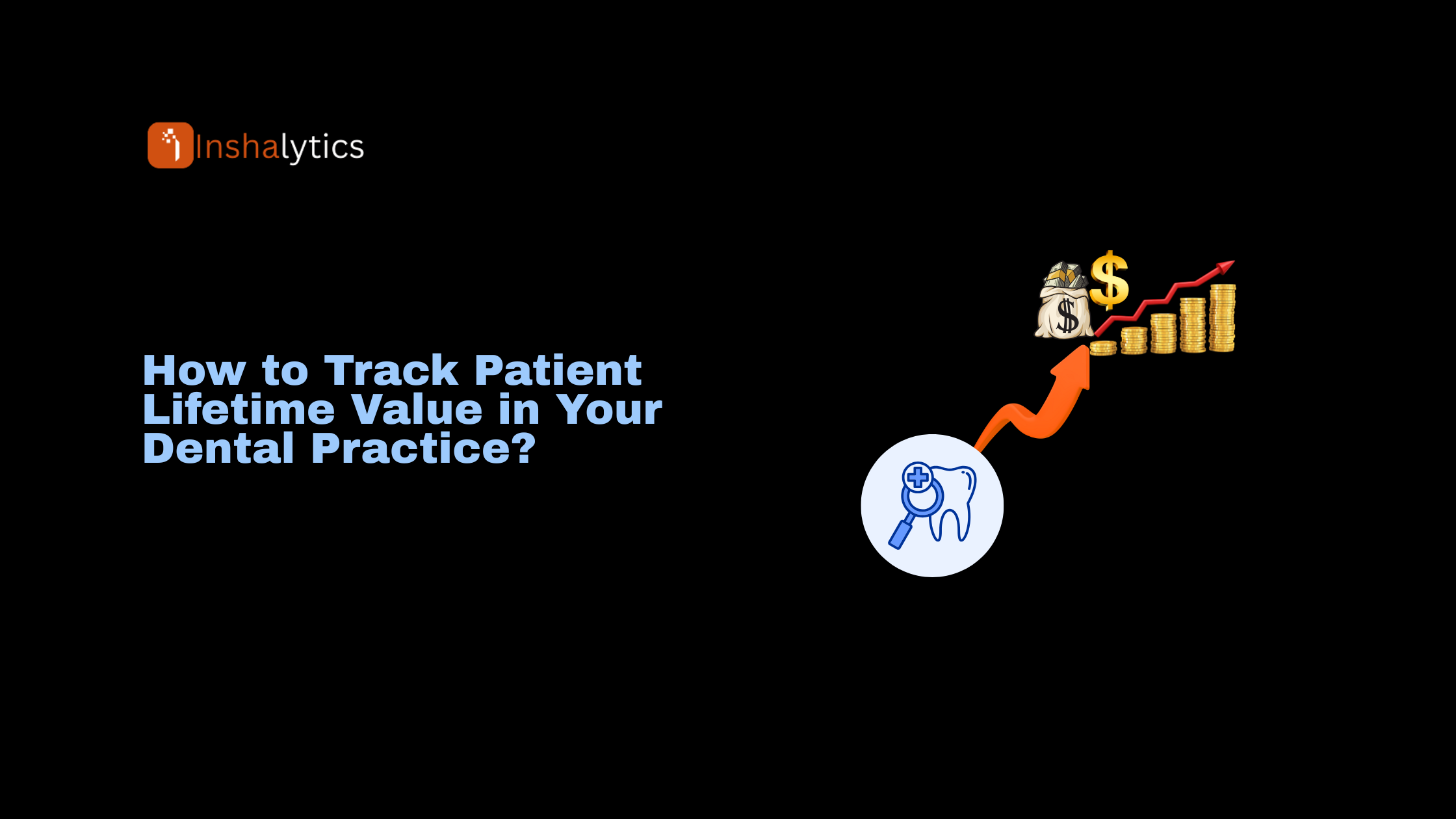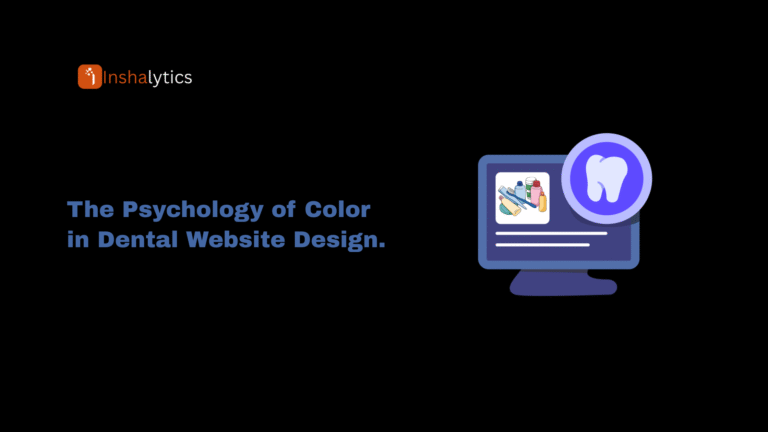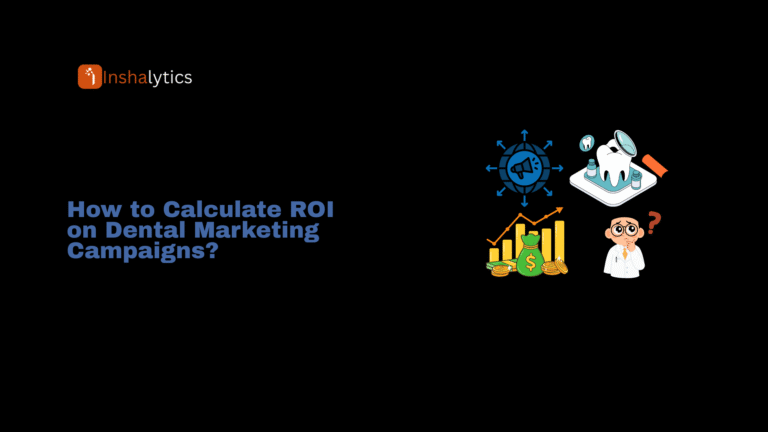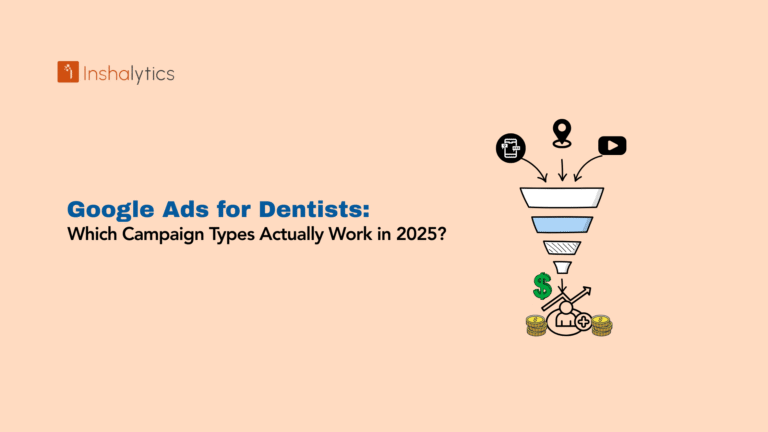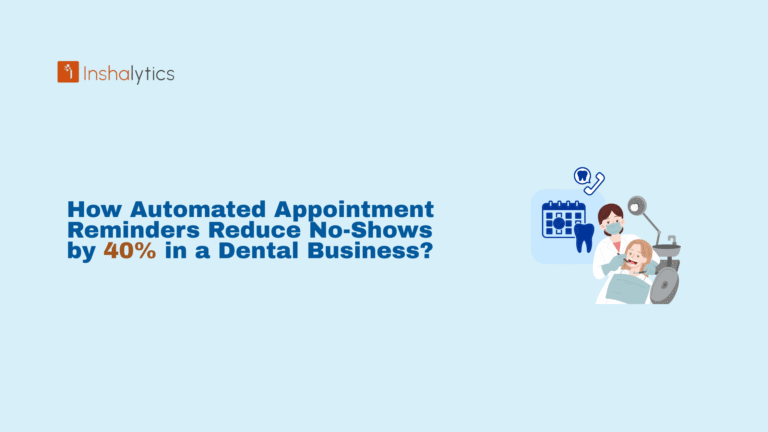Understanding how much each patient is truly worth to your dental practice isn’t just about numbers—it’s about building a sustainable, profitable business that delivers exceptional care. Patient lifetime value (PLV) is the metric that reveals the real financial health of your practice and guides smarter decisions about marketing, patient retention, and growth strategies.
In this comprehensive guide, you’ll learn exactly how to calculate, track, and leverage patient lifetime value to transform your dental practice’s profitability.
Understanding Patient Lifetime Value in Dental Practices
What is Dental Patient Lifetime Value (DPLV)?
Dental patient lifetime value represents the total revenue a single patient generates for your practice throughout their entire relationship with you. Unlike a one-time transaction, PLV captures the cumulative value of regular checkups, preventive care, restorative procedures, cosmetic treatments, and even the referrals they bring to your practice.
This metric goes beyond simple revenue tracking. It accounts for profitability by factoring in your direct costs, and it recognizes that different patients contribute vastly different amounts to your bottom line over time.
Why Tracking Patient Lifetime Value Matters for Your Practice?
Most dental practices focus heavily on acquiring new patients, but understanding PLV shifts your perspective dramatically. When you know that the average patient might be worth $8,000 to $12,000 over their lifetime with your practice, suddenly spending $500 on marketing to acquire them becomes a strategic investment rather than an expense.
Tracking patient lifetime value enables you to make informed decisions about patient acquisition costs, evaluate marketing ROI accurately, identify your most valuable patient segments, and allocate resources between retention and acquisition strategies effectively. Practices that monitor PLV consistently outperform competitors who simply chase new patient numbers without understanding the underlying economics.
Common Misconceptions About the $10,000 Industry Standard
You’ve likely heard that the average dental patient is worth $10,000. While this figure gets repeated frequently, it’s dangerously misleading. Your practice’s actual patient lifetime value depends on numerous factors, including your location, specialty services offered, fee structure, patient demographics, and the effectiveness of your retention systems.
A general dentistry practice focused primarily on preventive care will have a significantly different PLV than a practice offering extensive cosmetic or implant services. Similarly, a fee-for-service practice typically sees higher patient lifetime values compared to PPO-heavy practices with substantial write-offs.
Rather than relying on industry averages, you must calculate your own practice-specific patient lifetime value. This custom calculation provides actionable insights tailored to your unique situation.
How to Calculate Patient Lifetime Value?
Step 1: Calculate Average Annual Revenue Per Patient
Start by determining how much revenue an average patient generates annually. Review your practice management software to find your total collections for the year, then divide by your number of active patients.
Formula: Total Annual Collections ÷ Number of Active Patients = Average Annual Revenue Per Patient
For example, if your practice collected $800,000 last year with 1,200 active patients, your average annual revenue per patient is approximately $667.
Remember to use “active patients”—those who have visited within the last 18 months. Including inactive patients in this calculation will artificially deflate your numbers and lead to poor decision-making.
Step 2: Determine Average Patient Lifespan
Patient lifespan represents the average number of years a patient continues visiting your practice. To calculate this, you first need to determine your patient churn rate—the percentage of patients who leave your practice annually.
Churn Rate Formula: (Patients Lost in Year) ÷ (Starting Active Patients) × 100
If you started the year with 1,200 active patients, gained 150 new patients, and ended with 1,250 active patients, you lost 100 patients during the year. Your churn rate is 8.3%.
Patient Lifespan Formula: 100 ÷ Churn Rate = Average Years
With an 8.3% churn rate, your average patient lifespan is approximately 12 years.
Step 3: Factor in Your Profit Margin
Revenue alone doesn’t tell the complete story—you need to understand profitability. Calculate your profit margin by identifying your direct costs associated with patient care.
Direct costs typically include hygienist and assistant wages plus benefits, associate dentist compensation, dental supplies and materials, and laboratory fees. Importantly, direct costs are not the same as total overhead. You’re isolating the variable costs directly tied to providing patient care.
Profit Margin Formula: (Total Collections – Direct Costs) ÷ Total Collections × 100
If your annual collections are $800,000 and your direct costs are $150,000, your profit margin is 81.25%. This means for every dollar collected, you retain approximately 81 cents after direct costs.
Step 4: Calculate Patient Churn Rate
We touched on churn rate when calculating patient lifespan, but it’s worth emphasizing this metric’s importance. Your churn rate directly impacts every other aspect of patient lifetime value.
Track your churn rate quarterly to identify trends early. Seasonal patterns, competitive changes in your market, or internal service issues often show up in churn rate changes before affecting your bottom line significantly.
A healthy dental practice typically maintains a churn rate between 5-10%. Higher rates suggest problems with patient experience, recall systems, or competitive disadvantages. Lower rates indicate strong patient loyalty and effective retention strategies.
Step 5: Add Referral Value to Your Calculation
Satisfied patients don’t just return—they refer friends and family. Referral value can dramatically increase your calculated PLV, sometimes doubling the base figure.
To calculate referral value, track how many new patients come from existing patient referrals over a year period. Then divide by your average number of active patients.
Referral Rate Formula: Total Referral Patients ÷ Average Active Patients × 100
If 75 of your 150 new patients came from referrals and you averaged 1,225 active patients, your referral rate is 6.1%. This means each patient, on average, refers 0.061 new patients annually.
The Complete Patient Lifetime Value Formula
Now we bring everything together into the comprehensive formula:
Basic Patient Value: (Average Annual Revenue × Profit Margin × Patient Lifespan)
Referral Value: (Basic Patient Value × Referral Rate × Patient Lifespan)
Total Patient Lifetime Value: Basic Patient Value + Referral Value
Using our example numbers:
- Average Annual Revenue: $667
- Profit Margin: 81.25%
- Patient Lifespan: 12 years
- Referral Rate: 6.1%
Basic Patient Value: ($667 × 0.8125 × 12) = $6,502
Referral Value: ($6,502 × 0.061 × 12) = $4,757
Total Patient Lifetime Value: $11,259
This calculation reveals that each new patient who walks through your door represents over $11,000 in lifetime value—dramatically changing how you should think about patient acquisition costs and retention investments.
Essential Metrics You Need to Track Patient Lifetime Value
Active Patient Count vs. Inactive Patients
Your active patient count forms the foundation of all PLV calculations. Define active patients as those who have visited within the last 18 months. This timeframe aligns with typical recall intervals while accounting for patients who may skip one appointment cycle.
Monitor both your active patient count and inactive patient count monthly. A growing inactive patient list signals retention problems that will eventually impact your revenue and PLV. Many practices discover significant revenue opportunities by implementing reactivation campaigns targeting recently inactive patients.
Average Production Per Patient Visit
Track both production and collections per visit. Production represents the value of services provided, while collections represent actual payments received. The gap between these figures—often caused by insurance write-offs or payment plans—impacts your true patient lifetime value.
Higher average production per visit typically indicates better treatment acceptance rates and more comprehensive care delivery. Practices offering diverse services beyond basic preventive care generally achieve higher per-visit production.
Patient Retention Rate and Churn Metrics
While churn rate measures losses, retention rate measures successes. Calculate your retention rate by tracking what percentage of patients return for their next scheduled appointment.
Annual Retention Rate: (Patients at Year End – New Patients) ÷ Patients at Year Start × 100
Break retention down further by analyzing hygiene reappointment rates specifically. Patients who maintain regular hygiene appointments typically have much higher lifetime values than those who only visit for emergencies.
New Patient Acquisition Cost (PAC)
Your patient acquisition cost represents the total marketing and advertising investment required to acquire one new patient. Calculate PAC by dividing your total marketing spend by the number of new patients acquired in that period.
PAC Formula: Total Marketing Investment ÷ New Patients Acquired = Patient Acquisition Cost
Understanding PAC in relation to PLV is critical. If your PLV is $11,000 and your PAC is $300, you’re making a highly profitable investment. However, if your PAC approaches or exceeds your PLV, your practice faces sustainability challenges.
Patient Referral Rate and Conversion
Beyond calculating referral rate for PLV, track your referral conversion rate—what percentage of referred prospects actually schedule and complete appointments. Referred patients typically convert at higher rates than other marketing channels, making them especially valuable.
Implement systems to track referral sources in your practice management software. Ask every new patient how they heard about your practice and record this information consistently.
Collections Ratio and Net Production
Your collections ratio measures how effectively you convert production into actual collected revenue. Calculate this by dividing total collections by total production.
Collections Ratio Formula: Total Collections ÷ Total Production × 100
Healthy practices maintain collection ratios above 95%. Lower ratios suggest problems with insurance billing, payment policies, or accounts receivable management. Since PLV depends on collected revenue, a low collection ratio directly reduces patient lifetime value.
Tools and Software for Tracking Patient Lifetime Value
Practice Management Software with Built-In Analytics
Modern dental practice management systems include robust reporting capabilities that can automate much of your PLV tracking. Leading platforms like Dentrix, Eaglesoft, Open Dental, and Curve Dental offer customizable reports pulling the key metrics needed for PLV calculations.
When evaluating practice management software, prioritize systems that offer active patient reporting, production and collections tracking by patient, referral source tracking, and automated KPI dashboards. The ability to export data to spreadsheets provides flexibility for custom analysis.
Creating a Patient Lifetime Value Dashboard
Build a simple dashboard that consolidates your key PLV metrics in one view. This dashboard should update monthly and include active patient count, average annual revenue per patient, patient churn rate, patient lifetime (calculated), profit margin percentage, referral rate, and calculated patient lifetime value.
Share this dashboard with your team during monthly meetings. When everyone understands these metrics, they become more invested in improving them.
Automated Reporting and KPI Tracking
Set up automated monthly reports that deliver key metrics to your email without manual data pulling. Most practice management systems allow scheduled report generation and delivery.
Automation ensures consistency in tracking and prevents the common problem of only reviewing metrics when problems arise. Regular monitoring enables proactive adjustments rather than reactive crisis management.
Integrating Data from Multiple Sources
Some practices need to pull data from multiple systems—separate practice management, marketing, and accounting platforms. Consider using integration tools or data warehouses that consolidate information from various sources into unified reports.
While integration requires initial setup effort, it provides comprehensive visibility into how different aspects of your practice impact patient lifetime value.
How to Use Patient Lifetime Value Data to Grow Your Practice?
Setting Profitable Patient Acquisition Budgets
Once you know your PLV, you can confidently set marketing budgets. A common benchmark suggests spending 10-15% of PLV on patient acquisition while remaining highly profitable.
Using our example PLV of $11,259, you could justify spending $1,125 to $1,688 per new patient while maintaining strong profitability. This dramatically expands your marketing options compared to practices operating with arbitrary budget constraints.
Evaluating Marketing ROI Using Patient Lifetime Value
Calculate marketing ROI by comparing your patient acquisition cost to patient lifetime value rather than just first-visit revenue. This shift in perspective often reveals that marketing channels initially appearing expensive actually deliver excellent returns.
For instance, if a targeted Google Ads campaign costs $800 per new patient but those patients have a PLV of $11,000, you’re achieving a 13.75x return on investment—an outstanding result by any measure.
Identifying High-Value Patient Segments
Analyze PLV by patient segment to discover your most valuable demographics. Track PLV differences between family units versus individuals, fee-for-service versus insurance patients, different age groups, and patients accepting different treatment types.
This segmentation reveals where to focus retention efforts and which patient types to target in marketing campaigns. Many practices discover that certain segments deliver two to three times higher lifetime value than others.
Comparing Insurance vs. Fee-For-Service Production
One of the most valuable PLV applications involves comparing insurance patients to fee-for-service patients. Calculate separate PLV figures for each group by tracking their distinct metrics.
Most practices find that fee-for-service patients deliver significantly higher lifetime values due to better profit margins, higher treatment acceptance rates, and fewer administrative costs. This data helps inform strategic decisions about insurance participation.
Strategies to Increase Patient Lifetime Value
Improving Patient Retention and Reducing Churn
Small improvements in retention create dramatic PLV increases. Reducing churn from 10% to 8% extends average patient lifespan from 10 years to 12.5 years—a 25% increase in PLV with no change in annual revenue per patient.
Focus on enhancing patient experience at every touchpoint, implementing robust recall systems, training staff in relationship-building, and addressing negative feedback immediately. These retention-focused initiatives often deliver better ROI than new patient marketing.
Implementing Effective Recall Systems
Your recall system directly impacts patient lifespan and, therefore, PLV. Implement multi-channel recall approaches combining postcards, emails, text messages, and phone calls to maximize reappointment success.
Pre-book next appointments before patients leave your office, whenever possible. Patients with scheduled appointments are far more likely to return than those you’ll need to contact later.
Increasing Treatment Plan Acceptance Rates
Higher case acceptance directly increases annual revenue per patient. Train your clinical team in effective treatment plan presentation techniques that help patients understand the value and necessity of recommended treatments.
Consider offering flexible payment options, including third-party financing, in-house payment plans, and membership plans for uninsured patients. Financial barriers represent the primary obstacle to treatment acceptance for many patients.
Building a Patient Referral Program
Since referral value significantly boosts PLV, invest in formal referral programs. Offer incentives that motivate referrals without compromising professional ethics—gift cards, account credits, or charitable donations in patients’ names work well.
Make referring easy by providing referral cards patients can share, creating a simple online referral form, and regularly reminding patients about your referral program through newsletters and office signage.
Offering High-Value Services
Expanding your service mix to include higher-value treatments like dental implants, Invisalign or clear aligners, cosmetic dentistry, and advanced periodontal procedures can substantially increase PLV.
These services offer better profit margins and attract patients seeking comprehensive care who typically maintain longer relationships with practices that can address all their dental needs.
Creating Membership Plans for Uninsured Patients
Dental membership plans (sometimes called in-house dental plans) create recurring revenue while dramatically increasing retention among uninsured patients. These plans typically include preventive care with discounts on additional treatments.
Practices with membership plans report that member patients have 2-3x higher lifetime values than uninsured patients without memberships due to better retention and higher treatment acceptance.
Common Mistakes When Tracking Patient Lifetime Value
Using Generic Industry Averages Instead of Your Own Data
The most common mistake involves relying on the generic “$10,000 patient value” figure rather than calculating practice-specific numbers. Your actual PLV might be $6,000 or $15,000—either way, using inaccurate figures leads to poor decisions.
Commit to calculating your actual PLV even if the initial effort seems substantial. The insights gained justify the investment many times over.
Forgetting to Subtract Direct Costs
Some practices calculate PLV using gross production without accounting for profitability. This inflates PLV figures and can lead to overspending on patient acquisition.
Always include your profit margin calculation to ensure your PLV reflects actual profitability, not just revenue generation.
Not Updating Your Calculations Regularly
Patient lifetime value changes over time as your practice evolves, competition shifts, and economic conditions fluctuate. Calculate PLV at least annually, and quarterly if your practice is growing rapidly or making significant changes.
Outdated PLV calculations provide false confidence and can mask emerging problems until they become serious.
Ignoring the Impact of Different Patient Types
Treating all patients as having equal lifetime value misses crucial insights. A family of four accepting comprehensive treatment plans has vastly different value than a price-shopping patient seeking only emergency care.
Segment your PLV analysis to understand these differences and adjust your strategies accordingly.
How Often Should You Calculate and Review Patient Lifetime Value?
Review your comprehensive patient lifetime value calculation annually at minimum. This yearly analysis should coincide with strategic planning sessions where you set goals and allocate budgets for the coming year.
However, monitor the component metrics monthly. Track active patient count, new patients acquired, churn rate, and average production per patient as part of your regular practice metrics review. These monthly check-ins allow you to spot trends and make timely adjustments.
Quarterly reviews represent an ideal middle ground for most practices—frequent enough to stay responsive while not overwhelming your schedule with analysis.
Patient Lifetime Value Benchmarks by Practice Type
General Dentistry vs. Specialty Practices
General dentistry practices typically see patient lifetime values ranging from $5,500 to $12,000, depending on services offered and patient retention success. Practices emphasizing preventive care fall toward the lower end, while those successfully incorporating cosmetic and restorative services achieve higher values.
Specialty practices often achieve dramatically higher PLVs. Orthodontic practices might see PLVs of $15,000 to $25,000, while oral surgery and periodontal practices vary widely based on their procedure mix.
Fee-For-Service vs. PPO-Heavy Practices
Fee-for-service practices generally achieve 30-50% higher patient lifetime values than PPO-heavy practices due to better profit margins and higher treatment acceptance rates. A fee-for-service practice might see PLVs of $12,000 to $15,000, where a comparable PPO practice achieves $8,000 to $10,000.
This difference doesn’t necessarily mean abandoning insurance participation, but it should inform your strategic decisions about which plans to accept and how aggressively to market fee-for-service options.
Rural vs. Urban Practice Considerations
Location significantly impacts patient lifetime value through factors like local competition, patient demographics and income levels, typical fee schedules, and population mobility rates.
Urban practices often face more competition but may have access to affluent patient populations seeking comprehensive care. Rural practices might enjoy less competition but potentially lower fee tolerance and smaller populations. Calculate your own PLV rather than assuming rural or urban benchmarks apply.
Take Action on Patient Lifetime Value Today
Understanding and tracking patient lifetime value transforms how you view every aspect of your dental practice. This single metric connects patient care, marketing effectiveness, operational efficiency, and profitability into one comprehensive measure of practice health.
Start by calculating your current patient lifetime value using the formulas provided. This baseline measurement gives you a target for improvement and a benchmark for evaluating future changes.
Then implement systems to track the component metrics monthly. As you monitor these numbers consistently, patterns will emerge that guide smarter decisions about resource allocation, marketing investments, and patient retention strategies.
Remember that increasing patient lifetime value isn’t about squeezing more revenue from patients—it’s about building lasting relationships, delivering comprehensive care, and creating a practice that serves patients well while remaining financially sustainable.
The practices that thrive in today’s competitive dental market aren’t necessarily those with the most new patients each month. They’re the practices that understand patient lifetime value and make strategic decisions based on this critical metric.
